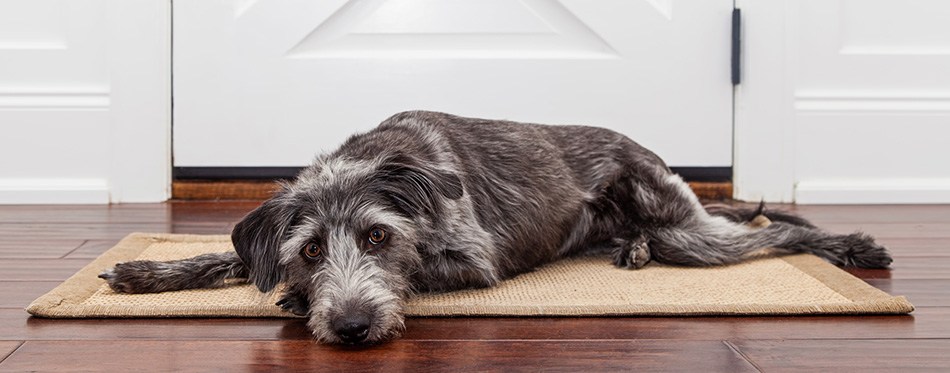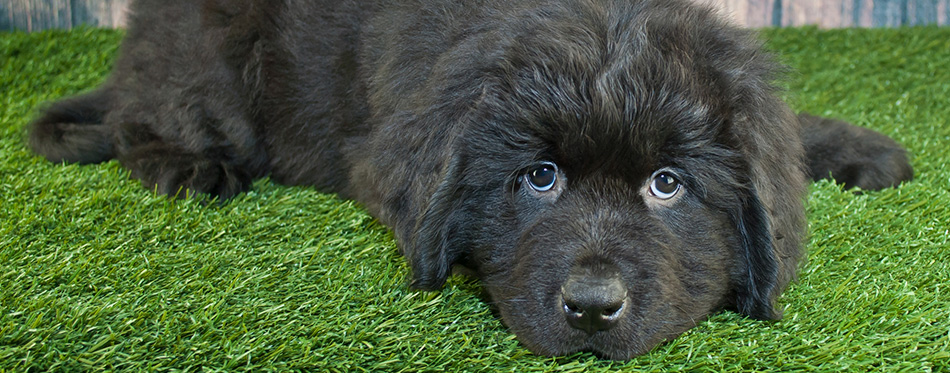Depression is like a dark cloud hovering over us, making us lose interest in our life, work, our loved ones and the things that make us happy and satisfied. It drains out all of the energy and joy we possess. Even our furry friends undergo this medical condition—depression in dogs is as real as their human companions’ melancholy. In order to avoid this and maintain your doggy’s happy disposition, it is always good to acknowledge the reasons for dog depression.

Canine Depression Symptoms
When it comes to such conditions, you have to keep track of warning signs. Here are several signs of depression in dogs that you have to be aware of.
- Changes in appetite
Humans manage stress and sadness in a myriad of ways. There are people who lack appetite when stressed out or depressed, while some binge-eat. This is also the same with our pets. If you feed your dog routinely and observed changes in his eating habits, then he is possibly feeling unhappy. Dogs often lose their appetite when undergoing depression.
- Sleep pattern changes
Dogs do love sleeping however they will try not to snooze when you’re around, particularly if you’ve just arrived home from work/school or eating. Usually, your pet will try to catch your attention or encourage you to play with them. If you noticed that your dog is not his usual self and is ignoring you or sleeping, then he is most possibly feeling emotional. Likewise, signs of restlessness and difficulty sleeping are also warning signs of canine depression.
- General loss of interest
Dogs are typically active little creatures—they love running around, checking out their surroundings, going for walks with their human and playing with their dog toys. One way on how to tell if your dog is depressed is when your canine loses interest in the things he loves and the activities that he used to do. He will ignore your presence and your sweet-talking, or has to be hauled outside for walks and exercise.
- Hides frequently
Pets are not too keen on mingling with their humans or other pets when they are depressed, just like us people. Hiding in quiet spots around the house might be a sign of depression.
- Constant paw licking
If you noticed that your dog keeps licking on his paws and showing other dog depression symptoms, then this may be a sign that he has the condition. However, be also aware that there are other reasons for this occupation—medical conditions like eczema, joint pain and bacterial infections could be causing continuous licking of paws.
- Destructive behavior
There are some doggies who give away their blues by doing destructive things. Constantly chewing on their toys, furniture, and other items in the house plus making a huge mess are depression warning signs.
- Lack of response
When your dog is feeling sad, he becomes withdrawn and indifferent. He will often ignore your commands or cajoling. He will also refuse to mingle with other people and dogs.

Recognizing Canine Depression Triggers
“Why is my dog depressed?” That’s the question we are going to answer in this part of our guide. It is easy to pinpoint sadness in our pups, however, determining the exact reason for this melancholy can be a challenge. As soon as you identify Fido’s depression symptoms, you can likely pinpoint the trigger as well. Here are some common dog depression triggers.
- Health problems
Lots of physical illnesses can make your doggy unhappy. If you see your dog in a depressive state, you have to get in touch with your veterinarian ASAP. It is crucial that you discover a physical basis for your pet’s unusual behavior before everything gets more difficult.
If the veterinarian discovers that a specific physical illness is hampering your dog’s disposition, then you have to follow your vet’s recommendations to heal your pet. Determine emotional or mental causes if the vet excludes physical illness as a reason for your pet’s depression.
- Grief
Like humans, dogs can feel the loss of their loved ones as well, whether they’re human or animal. Maybe your doggy is experiencing separation anxiety from being away from his favorite canine or feline friend. Or one of your doggy’s favorite human playmates has moved out of the home. We might not become really aware of it but our fur babies also experience grief.
- Changes in surroundings
A change in your pet’s surroundings or moving to a new location might trigger anxiety and sadness in your pet. This condition might be temporary though; it usually takes a while for your doggy to adapt to his new environment.
- The presence of a new pet
Bringing a new pet in your home, whether a cat, another dog or a specific animal can affect your fur baby’s disposition. Your doggy might be sad with all the time you spend with the new addition to the family. This may be impermanent as well – eventually, your pet will possibly give in and go along with the new pet, therefore bettering his disposition.
- Their companion’s depression
Dogs can pick up on our sorrow. They are known for their empathy, which is why canines are often tagged as man’s best friend. They feel our pain and they might simulate what we feel. They are familiar with our moods and they will shift their disposition as well to go with our own.
Dogs and Seasonal Depression
Grey weather can be a bummer. Frequent rains can dampen our mood, too. Do dogs get depressed when there’s not enough sunlight? Seasonal depression is a condition that not only bothers humans, but dogs as well. This condition happens specifically during the colder and snowier months of the year.
- Changes in season
In case you live in a region that undergoes significant changes every season, then your pet might be prone to seasonal depression.
- Constant rainy weather and storms
Frequent rains and typhoons can change your doggy’s disposition.
- Harsh weather
The moods of dogs residing in areas that often undergo harsh weather conditions like hurricanes can be negatively influenced by atmospheric pressure changes.

Easing Your Doggy’s Sadness
Your doggy deserves to be happy at all times. If your pup displays several of those symptoms mentioned earlier, you can have a go with these suggestions. Improve your dog’s depression by following these tips. Do not forget to show your love and kindness to your pup.
- Set up a regular exercise routine
Your dog might show depression symptoms after moving to a new home or become sad as a reaction to a new pet. To improve your dog’s disposition, spend more time with him by setting up a regular exercise regimen. Go for walks with your dog at certain times—this activity not only prevents canine obesity, it can also increase endorphin production, also known as the happy hormone.
- Curb boredom
Dogs need to have something to do at all times—they require lots of stimulation to release their excess energy and stir up their innate curiosity. Play games with your doggy for some physical and mental stimulation or give him new toys to keep him occupied for hours on end.
- Allow your pet to spend time with other doggies
Dogs are known to be pack animals thus you do have to allow your dogs to socialize with other canines. Drop by to the dog park or arrange a play date with friends who have doggies too—this will help prevent your fur baby from getting the blues. This is especially helpful if your doggy is grieving over a lost playmate.
- Get more training
Increase training times with your canine. You can do the training or ask for the help of a professional. Training provides your pet with a sense of purpose and indispensable behavioral limits.
- Teach your pooch new tricks
Bond with your doggy by teaching him new tricks to release all that pent-up energy. This activity will also help stimulate your doggy’s mental facilities apart from alleviating boredom.
- Visit the vet
Symptoms of canine depression are at times caused by a physical illness. Arrange an appointment with your vet to recognize and begin treatment instantly for medical conditions.
- Check out the food you give to your doggy
A change in mood can be attributed to low blood sugar. Make sure to be strict with your doggy when it comes to his meals and give them high-quality food and dog treats to stop their blood sugar from crashing.
- Tap into their instincts
Prevent boredom by allowing them to be canines. Dogs are hunters by heart thus you can take advantage of this natural canine instinct by engaging your pet in games that make use of their hunter instinct.
- Test natural treatments and supplements for dogs
Probiotics are said to have been connected with overall mood improvement. The stomach accommodates plenty of bacteria which also includes serotonin, a type of endorphin. Omega 3 and omega 6 are essential fatty acids which not only improve the immune system but also enhance the workings of your pet’s brain. Look for high-quality canine supplements and dog food that contain these components.
Anxiety Medications for Doggies and Its Aftereffects
Dogs undergoing depression or suffering from separation anxiety, constant pain, and uncontrollable behaviors are at times given treatment that has an impact on serotonin levels. The most commonly prescribed depression meds for canines include fluoxetine, clomipramine, and buspirone.
What is serotonin? Serotonin is found in the nervous system and controls heart and lung functioning, appetite, pain awareness, movement, body temperature, and most specially behavior.
However, you do have to be aware that your dog may acquire SS or serotonin syndrome, an increase in the body’s serotonin levels. If not treated swiftly, this condition can result in death. Serotonin syndrome takes place if your pet is expending several medications which leads to an increase in serotonin. Here are some of the symptoms caused by SS.
- Trouble walking
- Hyperthermia or increase in body temperature
- Tachypnea or hasty breathing
- Tachycardia or quick heart rate
- Agitation
- Diarrhea
- Nausea
- Seizures
- Shaking
Serotonin Syndrome (SS) Triggers
Serotonin syndrome needs to be taken care of quickly. Here are the factors that can cause this condition.
- Excessive consumption of canine anti-depressants
- Using the medicine in combination with SSRIs, MAOIs, TCAs and trazodone
Serotonin syndrome in dogs typically surface quickly. Following consumption, your pet will show symptoms after 10 minutes or four hours.
Treatments do have possible side effects. The veterinarian might perform blood tests prior to giving your pet anxiety medicines or anti-depressants. The vet may also administer cyclic blood tests over the course of the treatment to find out how your doggy’s body is reacting to the medicine. Make sure to talk to your veterinarian about possible side effects that are connected to the treatment.
Changes in behavior during the treatment will not happen in an instant. Like lots of medicines, changes might take a number of weeks and even months before you see obvious shifts in your doggy’s disposition and behavior. If possible, anti-depressants must be utilized only for the short term.
Dogs are a part of our family thus it is only natural for us to be upset when they’re sad or under the weather. It would be a big help if you are familiar with canine depression syndromes so you can easily spot this condition early on. Being aware of the symptoms and the ways in which you can ease those signs may also prevent this condition from getting worse.
There are lots of ways on how to help a depressed dog. Going to the vet and asking for their opinion is still the best way to find out if your dog has this condition. The veterinarian is trained to provide a proper diagnosis for your doggy’s state.
For the time being, make sure that you shower your doggy with lots of love and affection. Guarantee that your pup is active at all times and receive proper training, too. Most essentially though, have more treats on hand.
Sources:
- Dog Depression – Michelson Found Animals

